The Peleș Castle in Sinaia, Romania, is a stunning architectural masterpiece that was built in the 19th century, being inaugurated in 1883 to be the future residence of King Ferdinand I and Queen Marie of Romania. Situated in the picturesque town of Sinaia, this Romanian gem holds immense cultural significance and attracts visitors from all over the world.
Commissioned by King Carol I, the castle’s design showcases the exquisite craftsmanship of the Neorenaissance style. Nestled amidst the breathtaking Carpathian Mountains, Peleș Castle offers a mesmerizing view that adds to its allure.
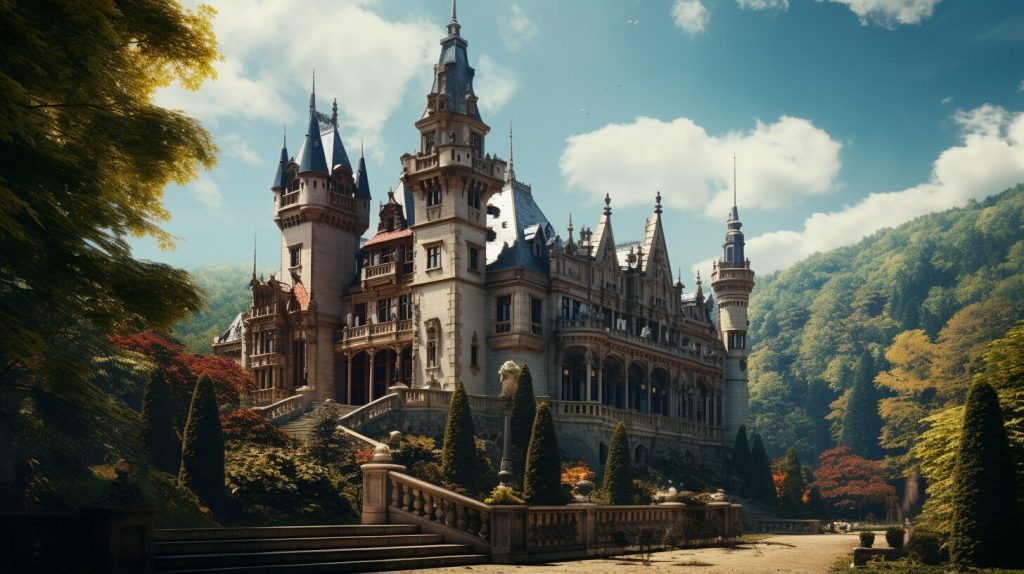
An extraordinary feature of Peleș Castle is that it was the first castle in Europe to be fully powered by locally produced energy. This technological advancement was truly groundbreaking for its time.
Today, Peleș Castle stands as a museum, open to the public since 1953. Its stunning architecture, including a grand marble staircase and intricately designed stained glass windows, captivates visitors. The interior of the castle is adorned with sculpted wood, reflecting the skillful craftsmanship of Romanian artisans. The collection of arms and armor within the castle is remarkable and adds to its historical significance.
[affiliate_offers_block city=”Sinaia” label=”Peleş Castle, Sinaia” place=”Peleş Castle”]
The castle also houses permanent and temporary exhibitions, showcasing the rich cultural heritage of Romania. One such exhibition is the ceramics exhibition, which displays the beauty of Romanian ceramics. Another notable exhibition is the horology exhibition, which showcases a collection of clocks from the royal collection.
The park and terraces surrounding Peleș Castle are equally enchanting, adorned with colorful flowerbeds, elegant fountains, and charming pavilions. Visitors can take leisurely walks and revel in the serenity of the surroundings.
Peleș Castle is often regarded as one of the most beautiful castles in Europe and has become a must-visit destination for travelers. It continues to attract thousands of visitors each year, who are captivated by its architectural splendor and rich cultural heritage.
Key Takeaways:
- Peleș Castle is a stunning architectural masterpiece located in Sinaia, Romania.
- Commissioned by King Carol I, it showcases the Neorenaissance style.
- The castle was the first in Europe to be powered by locally produced energy.
- Peleș Castle is now a museum and features intricate architecture, including a grand marble staircase and stained glass windows.
- It houses permanent and temporary exhibitions, including ceramics and horology.
- The castle’s park and terraces offer beautiful views and a tranquil atmosphere.
- Peleș Castle is considered one of Europe’s most beautiful castles and attracts numerous visitors each year.
A Royal Commission and Neorenaissance Design
It was commissioned by King Carol I, Romania’s first king, and was designed by the German architect Johannes Schultz in a Neorenaissance style that combined elements from German and Italian architecture. Built in the 19th century, Peleș Castle showcases a magnificent blend of classic European styles, making it one of the most famous castles in Romania.
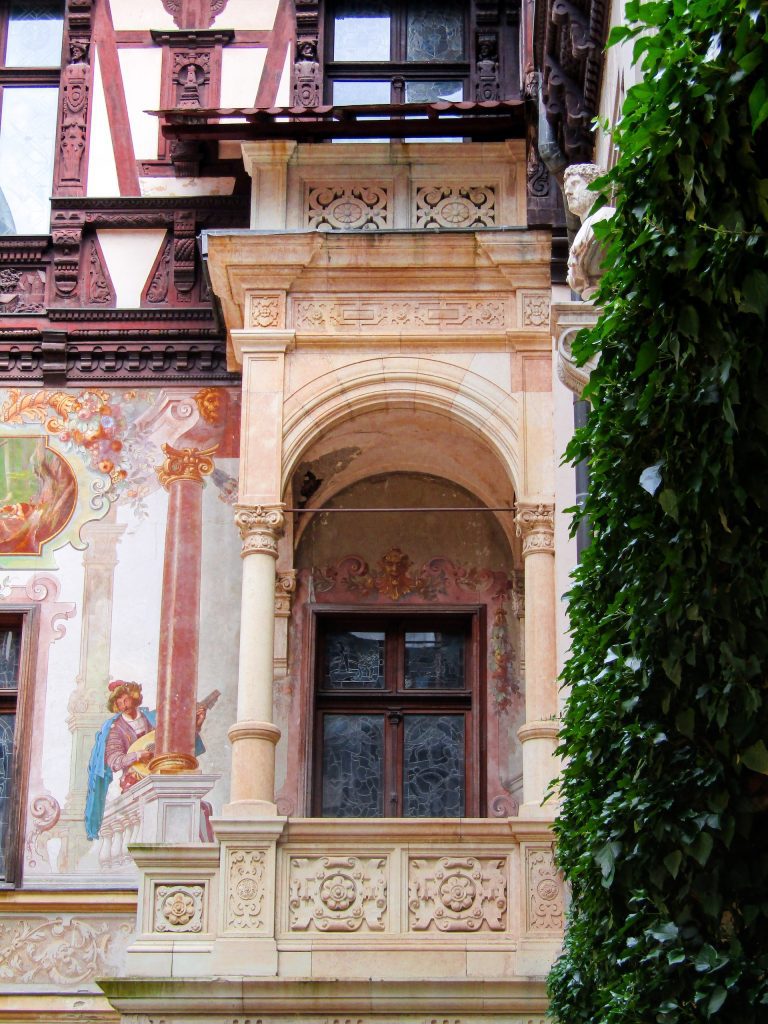
The royal commission ensured that Peleș Castle would be a testament to Romania’s rich history and cultural heritage. King Carol I wanted a residence that would reflect his love for the country and its people, and the castle became a symbol of his reign. The Neorenaissance design was chosen to represent a revival of the Renaissance era, emphasizing the grandeur and elegance of the royal family.
Construction and Additional Buildings
The construction of Peleș Castle began on August 22, 1873, and it was originally intended to be a hunting house and summer retreat for the Romanian royal family. The castle’s design is a stunning example of German and Italian neo-Renaissance styles, combining elements of both to create a unique architectural masterpiece.
Throughout its construction, several additional buildings were added to the castle complex, further enhancing its grandeur and functionality. One of these buildings is the Economat Building, which housed the power plant that provided electricity for the entire castle. Remarkably, Peleș Castle was the first castle in Europe to be fully powered by locally produced energy, a testament to the innovative vision behind its construction.
The castle complex also includes the royal stables, which were designed to house the horses and carriages of the royal family. These stables were built to the highest standards of luxury, featuring spacious and well-appointed accommodations for the horses, as well as storage space for the royal carriages.
Another notable building within the Peleș Castle complex is the Foisor hunting lodge. Located adjacent to the castle, the Foisor is a charming structure that was used by the royal family for hunting expeditions in the surrounding Carpathian Mountains. It served as a basecamp for their hunting activities and provided a comfortable and elegant retreat after a day in the wilderness.
Together, these additional buildings contribute to the overall magnificence of Peleș Castle, showcasing the meticulous attention to detail and the desire to create a truly exceptional summer residence for the Romanian royal family. The combination of architectural styles, the integration of modern technology, and the dedication to providing luxurious amenities demonstrate the grandeur and significance of this historical landmark.
Seizure and Closure
After the forced abdication of King Michael I in 1947, the communist regime seized Peleș Castle and all the properties of the royal family. In 1948, the entire estate was closed, and many artworks were moved to the Art Museum in Bucharest.
Under the Communist regime, Peleș Castle was opened as a museum in 1953, but due to deterioration, it was closed again in 1975. The castle underwent renovations between 1975 and 1989 and served as a retreat for visiting heads of state during that time.
Following the Romanian Revolution of 1989, Peleș Castle was reopened to the public. In 2007, it became the property of King Michael I, marking its return to the royal family.
Today, Peleș Castle stands as one of Romania’s most popular tourist attractions, captivating between 250,000 and 500,000 visitors annually. The castle’s history of seizure and closure under communism adds to its allure, as visitors have the opportunity to explore the rich cultural heritage of the royal family in a setting that once played a significant role in Romanian history.
Restoration and Reopening
Between 1975 and 1989, the castle underwent extensive renovations and was also used as a retreat for visiting heads of state during the communist regime. The restoration efforts aimed to bring back the castle’s original splendor and preserve its historical significance. Skilled craftsmen meticulously restored the intricate wood carvings, stained glass windows, and ornate decorations that adorn the castle’s interior.
After years of careful restoration work, Peles Castle reopened its doors to the public in 1989. The reopening was a significant event, coinciding with the Romanian Revolution that marked the end of the communist regime. As Romania moved towards a new era of freedom and democracy, Peles Castle stood as a symbol of national heritage and cultural pride.
Since its reopening, Peles Castle has become a popular tourist attraction, drawing hundreds of thousands of visitors each year. The castle’s stunning architecture, with its blend of German and Italian neo-Renaissance styles, continues to captivate visitors from around the world. The meticulously restored interiors, filled with luxurious furnishings and intricate details, offer a glimpse into the opulent lifestyle of the Romanian royal family.
Today, Peles Castle not only serves as a testament to Romania’s rich history but also plays a role in international diplomacy. The castle has hosted numerous important guests, including heads of state and dignitaries, who have been welcomed to Romania with grandeur and hospitality. The castle’s serene surroundings and elegant ambiance provide the perfect setting for diplomatic meetings and cultural exchanges.
As visitors explore the castle, they can admire the impressive horology exhibition, showcasing over 50 clocks from the royal collection. The exhibition highlights the artistry and craftsmanship of these timepieces, offering a glimpse into the past. Additionally, the castle houses a ceramics exhibition, showcasing a collection of exquisite ceramic works from renowned Romanian artists.
Peles Castle stands as a testament to Romania’s rich heritage and cultural significance. Its restoration and reopening have ensured that this architectural gem continues to captivate and inspire visitors. With its timeless charm, grandeur, and historical significance, Peles Castle remains one of the most beautiful castles in Europe, a true jewel in Romania’s cultural crown.
Popular Tourist Attraction
Today, Peleș Castle is a popular tourist attraction, welcoming between 250,000 and 500,000 visitors annually. The castle’s exquisite architecture, stunning surroundings, and rich historical significance draw tourists from all over the world. Its fame as one of Romania’s most famous castles has made it a must-visit destination for those interested in exploring the country’s cultural heritage.
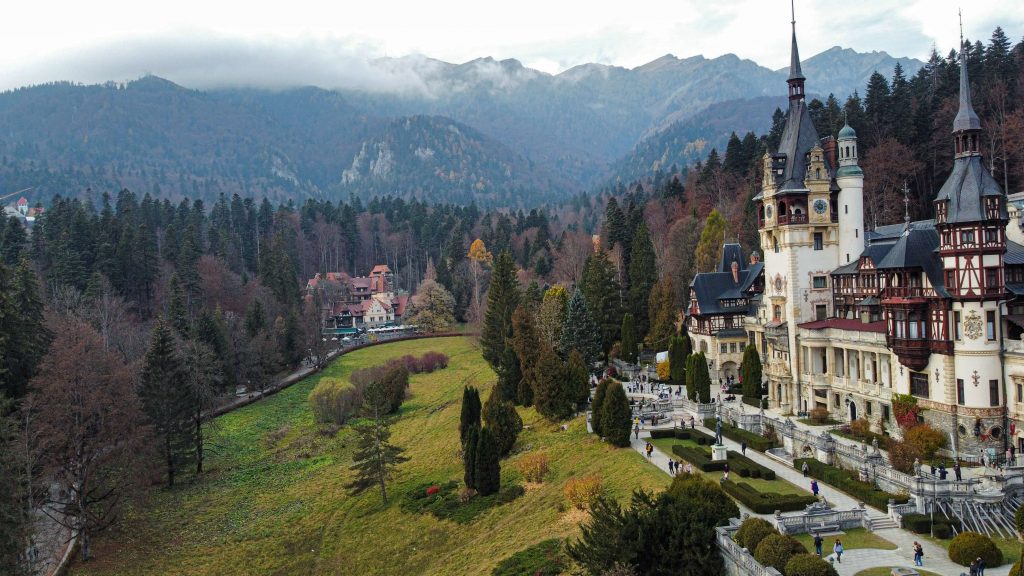
With its impressive German and Italian neo-Renaissance design, Peleș Castle offers a captivating glimpse into the past. Its fairy-tale-like appearance and picturesque setting in the Carpathian Mountains make it a truly enchanting place to visit.
One of the main reasons for the castle’s popularity is its historical significance. Built in the 19th century, it served as the summer residence for the Romanian royal family. The castle’s grandeur and opulence reflect the royal lifestyle and provide visitors with a glimpse into the country’s regal past.
Inside the castle, visitors can explore the beautifully decorated rooms, adorned with intricate woodcarvings, lavish textiles, and stunning stained glass windows. The collection of arms and armor in the Great Armory Room is particularly impressive, showcasing the castle’s rich history and royal connections.
Aside from the castle itself, the park and terraces surrounding Peleș Castle offer breathtaking views of the Carpathian Mountains. The well-maintained grounds provide a tranquil setting for visitors to relax and enjoy the natural beauty of the area.
In addition to Peleș Castle, tourists can also explore the nearby Pelisor Castle, a smaller but equally charming royal residence. The Foisor Hunting Lodge is another notable attraction in the area, offering a glimpse into the royal family’s recreational activities.
Sinaia, the town where Peleș Castle is located, is a picturesque destination in its own right. Known for its elegant architecture and charming streets, it offers a delightful atmosphere for visitors to explore. The town is also a popular destination for skiing enthusiasts, with various ski resorts in the surrounding area.
Traveling to Sinaia is easily accessible, with train connections available from Bucharest and Brasov. For those traveling by car, the DN1 national road provides a scenic route to reach the town. Whether you’re interested in history, architecture, or simply enjoying the beauty of nature, a visit to Peleș Castle and Sinaia is sure to be a memorable experience.
Architectural Marvels
The castle’s architecture is a blend of different styles, with its medieval-themed inner courtyard leading to the grand Hall of Honor. Peles Castle, located in Sinaia, Romania, is a true testament to the beauty and grandeur of the neo-Renaissance design. Built in the 19th century for King Carol I, this architectural marvel combines German and Italian influences, resulting in a unique and captivating structure.
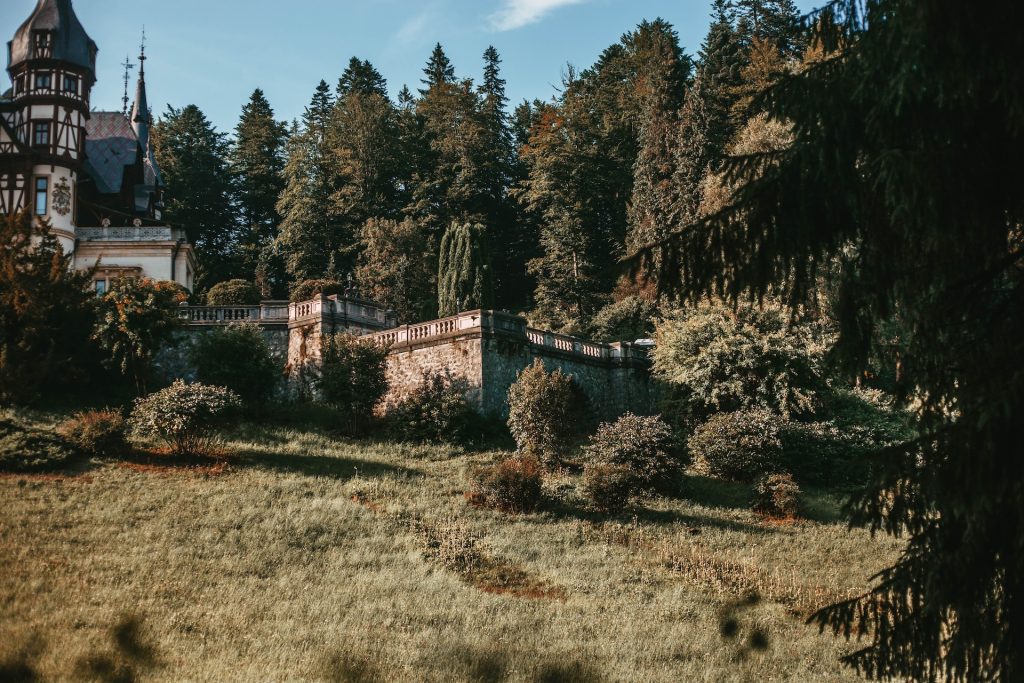
As visitors step inside the castle, they are immediately greeted by the breathtaking medieval-themed inner courtyard. This outdoor space features intricate stone carvings, archways, and a sense of timelessness that transports visitors to another era. The courtyard is a true architectural gem and sets the stage for the remarkable treasures that lie within the castle.
One of the highlights of Peles Castle is the grand Hall of Honor. This majestic hall, with its soaring ceilings and ornate decorations, is a true testament to opulence and grandeur. The walls are adorned with rich tapestries, and the massive chandelier that hangs from the ceiling casts a warm and inviting glow over the space. The Hall of Honor is a living testament to the royal significance of Peles Castle and serves as a reminder of the grand events that have taken place within its walls.
Royal Significance and Notable Guests
The castle also hosted many important figures of the 19th and early 20th century, including Emperor Franz Joseph and renowned artists like George Enescu and Jacques Thibaud. Peles Castle’s royal significance attracted members of the Romanian and British royal families, the Russian dynasty, and the royal families of Germany and Greece. It served as a summer retreat for the Romanian royal family and was a meeting place for influential individuals from around the world.
Emperor Franz Joseph of Austria-Hungary, known for his long reign, visited Peles Castle multiple times and was impressed by its architectural grandeur. The Crown Prince of Japan also ventured to the castle during his European tour.
Peles Castle was a notable destination for renowned musicians. George Enescu, a Romanian composer and violinist, performed at the castle on several occasions. Jacques Thibaud, a French violinist, also graced the halls of Peles Castle with his musical talent.
Peles Castle has been a gathering place for influential and esteemed individuals throughout history. Its royal allure and cultural significance have attracted visitors from all walks of life, leaving a lasting impression on those fortunate enough to experience its splendor.
Exquisite Interior
The interior of Peleș Castle is equally impressive, with 160 rooms decorated in exquisite detail. The castle’s interior is a testament to the opulence and grandeur of its time, showcasing a blend of German and Italian neorenaissance styles. As visitors step inside, they are greeted with a stunning display of craftsmanship and artistic expression.
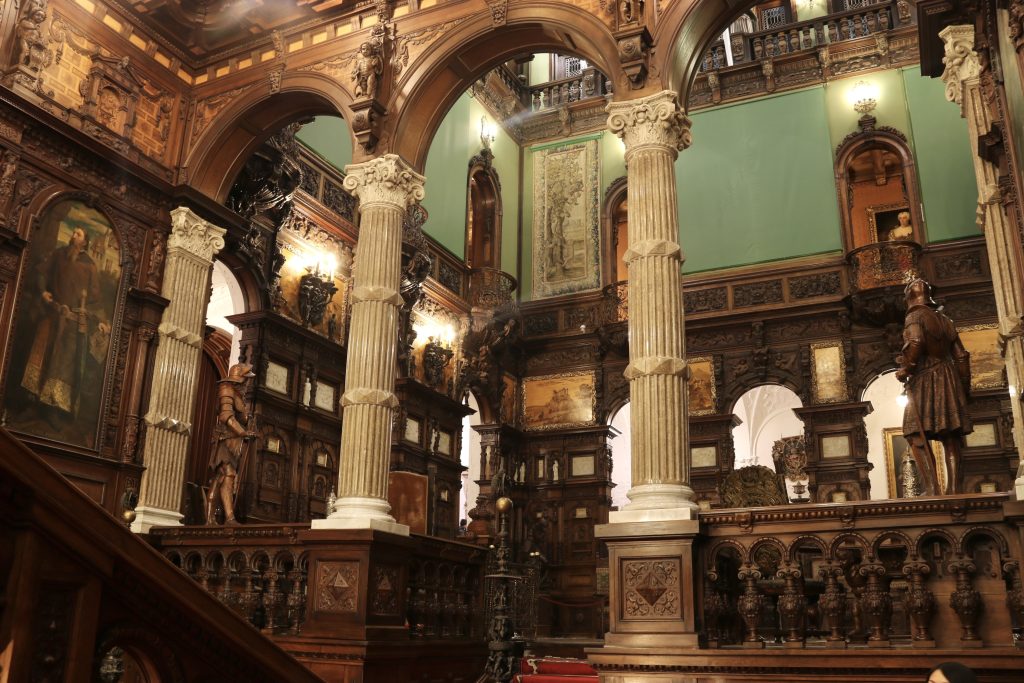
The Great Armory Room is one of the highlights of the castle’s interior. This magnificent space houses an impressive collection of arms and armor, including swords, rifles, and medieval weapons. The intricately designed weaponry is displayed on the walls and showcases the rich history of Romania.
The Royal Library is another gem within Peleș Castle. It houses a unique collection of manuscripts decorated in gold, showcasing the intellectual pursuits of the royal family. Visitors can explore the library’s shelves lined with beautifully bound books and immerse themselves in the rich literary history of Romania.
Throughout the year, Peleș Castle hosts several permanent and temporary exhibitions that further showcase its exquisite interior. One of the notable exhibitions is the ceramics exhibition in the Peles Museum, located within the castle complex. Here, visitors can marvel at over 5,000 pieces of ceramics from various cultures around the world, offering a glimpse into different artistic traditions and techniques.
The attention to detail in the castle’s interior is truly exceptional. From the meticulously carved woodwork to the intricate stained glass windows, every element enhances the overall beauty of the castle. Each room has its own unique character and purpose, making the exploration of Peleș Castle a truly immersive experience.
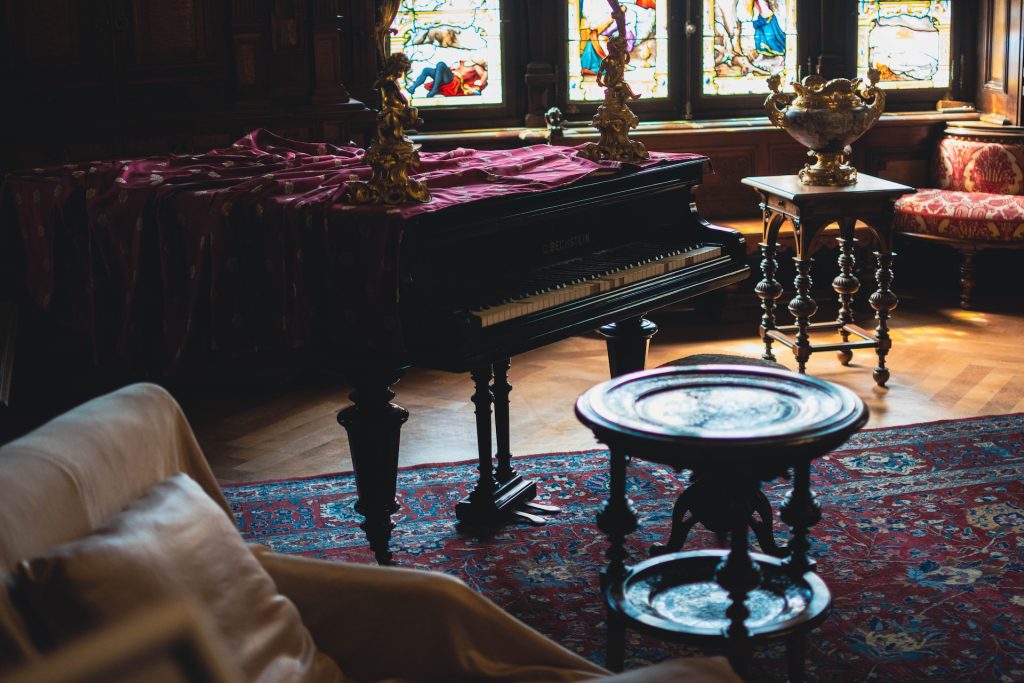
The medieval-themed inner courtyard is another architectural marvel within the castle. With its picturesque setting and charming atmosphere, it provides visitors with a glimpse into the past while surrounded by the grandeur of the present.
Overall, the exquisite interior of Peleș Castle, with its Great Armory Room, Royal Library, and captivating ceramics exhibition, offers a fascinating journey into the rich cultural heritage of Romania. The castle’s interior, combined with its beautiful surroundings, makes it a must-visit destination for anyone seeking to immerse themselves in the history and beauty of this enchanting place.
Horology Exhibition
Another highlight of the castle is the Horology exhibition, which displays over 50 clocks from the private royal collection. This fascinating collection includes a wide variety of clocks, ranging from elegant grandfather clocks and exquisite pendulum table clocks to charming fireplace clocks, delicate alarm clocks, and even intricate pocket watches. The clocks showcased in the exhibition predominantly belonged to King Carol I, but there are also notable pieces from Queen Marie, Carol II, and King Michael, representing a rich tapestry of horological history.
The exhibition offers visitors a unique opportunity to delve into the world of timekeeping and witness the evolution of clockmaking craftsmanship. With clocks dating back to the 18th, 19th, and 20th centuries, the collection provides a captivating journey through different styles and techniques prevalent during those periods.
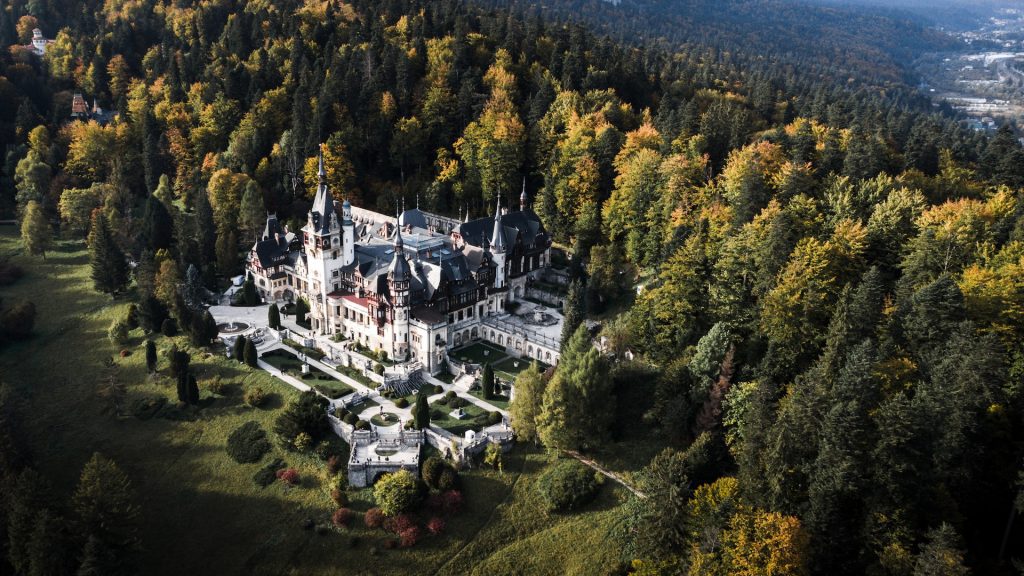
Peles Castle itself, a Neo-Renaissance palace constructed between 1873 and 1914, serves as a stunning backdrop for the horology exhibition. The castle’s intricate wood carvings, opulent furnishings, and magnificent stained glass windows enhance the grandeur of the displayed timepieces, creating a truly enchanting ambiance.
In addition to the Horology exhibition, visitors can explore the castle’s other remarkable rooms and collections. The Great Armory Room houses an impressive display of weapons and armor, showcasing the castle’s rich history. The Royal Library, with its collection of rare books and manuscripts, offers a glimpse into the intellectual pursuits of the Romanian royal family.
As one of Romania’s most popular tourist attractions, Peles Castle welcomes between 250,000 and 500,000 visitors each year. The Horology exhibition, with its diverse and exceptional collection of clocks, adds an extra layer of fascination to the castle’s allure and ensures a memorable experience for all who visit.
Enchanting Surroundings
The castle is surrounded by a beautiful park and terraces with flowerbeds, fountains, and hidden passages that add to its fairy-tale ambiance. Nestled near the majestic Carpathian Mountains, Peles Castle offers visitors breathtaking views of the scenic landscape, making it an idyllic retreat for nature lovers and architecture enthusiasts alike.
The park surrounding the castle is meticulously designed, with winding paths that lead visitors through lush greenery and vibrant blooms. Flowerbeds burst with color, creating a picturesque backdrop for leisurely strolls and picnics. The fountains scattered throughout the park enhance the magical atmosphere, with the soothing sound of water adding to the tranquility of the surroundings.
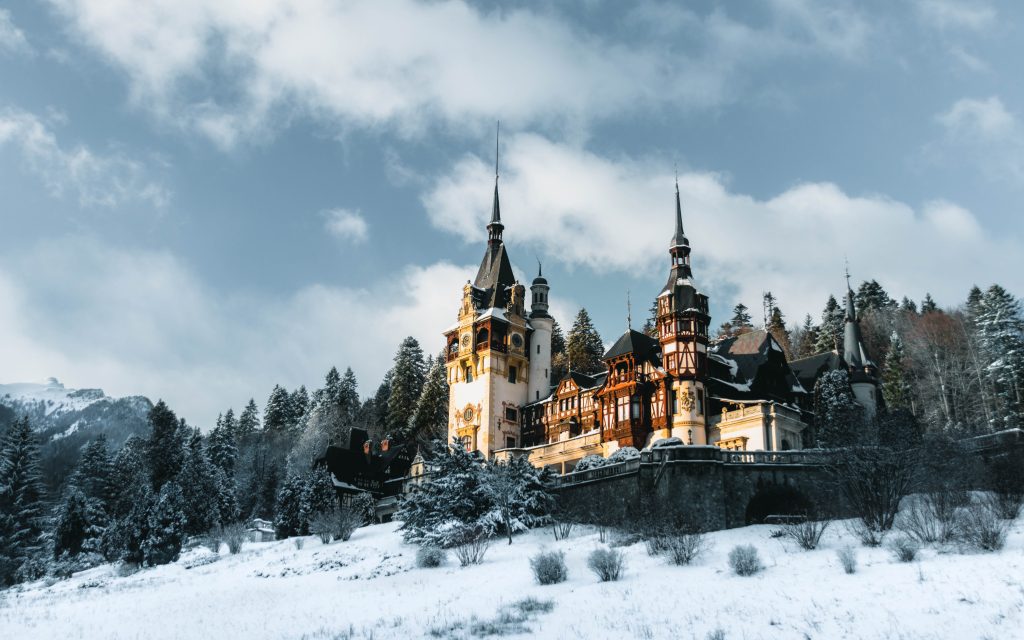
From the terraces, visitors can marvel at the awe-inspiring vistas of the Carpathian Mountains. The sight of snow-capped peaks and densely forested slopes creates a sense of awe and wonder. The terraces themselves provide the perfect spot for visitors to pause and take in the beauty of the natural landscape that surrounds Peles Castle.
As visitors explore the park, they may stumble upon hidden passages that evoke a sense of mystery and discovery. These secret pathways add an element of adventure to the castle grounds, inviting visitors to explore further and unravel the secrets of the enchanting surroundings.
Pelisor Castle and Nearby Attractions
Visiting Peleș Castle can be combined with a visit to the nearby Pelisor Castle, which is the smaller sibling of Peleș and also worth exploring. Located within the Royal Domain of Sinaia in Romania, Pelisor Castle is a masterpiece of Neo-Renaissance architecture. Built between 1873 and 1914 for King Carol I of Romania, Pelisor Castle showcases exquisite detailing, stunning interiors, and a rich collection of royal artifacts.
While Peles Castle attracts visitors with its grandeur and opulence, Pelisor Castle offers a more intimate and charming experience. The castle’s smaller size allows for a closer look at the intricate craftsmanship and artistic elements that adorn its rooms and halls.
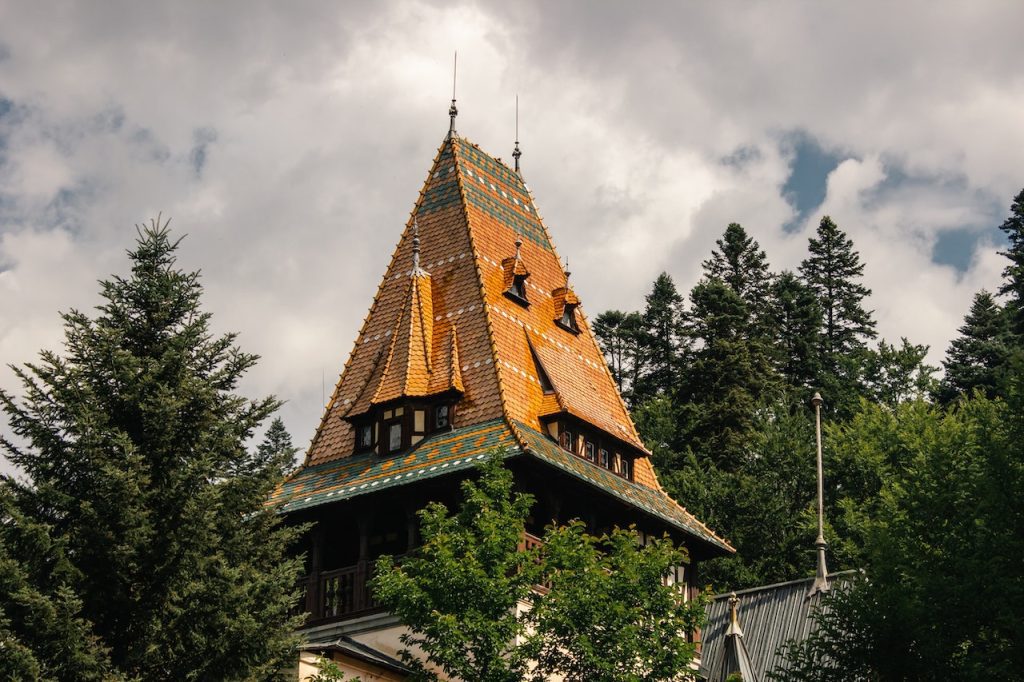
When visiting Pelisor Castle, be sure to explore the Royal Apartments, where the royal family resided. These rooms are adorned with unique and artful decorations, including ornate ceilings, intricate woodwork, and beautiful tapestries.
In addition to Pelisor Castle, there are several other attractions in the vicinity of Sinaia that are worth exploring. One of the most famous nearby attractions is Bran Castle, also known as Dracula’s Castle. Perched on a hilltop, Bran Castle is a medieval fortress that offers breathtaking views of the surrounding countryside.
For nature enthusiasts and outdoor adventurers, Sinaia offers excellent skiing opportunities. The nearby Carpathian Mountains provide a picturesque backdrop for skiing and snowboarding during the winter months. The slopes cater to both beginners and experienced skiers, making Sinaia a popular destination for winter sports enthusiasts.
Another noteworthy attraction close to Sinaia is the Foișor Hunting Lodge, originally built as a royal retreat for hunting activities. This picturesque lodge is nestled within a forested area and offers a glimpse into Romania’s history and the royal family’s passion for hunting.
Whether you choose to explore Pelisor Castle or venture further to other nearby attractions, Sinaia promises a memorable experience filled with history, culture, and natural beauty.
Getting to Sinaia
To get to Sinaia, visitors can take a train from Bucharest, which takes about 1.5 to 2.5 hours. The train journey offers frequent departures from Gara de Nord, the main train station in Bucharest. It is a convenient and comfortable mode of transportation, allowing travelers to relax and enjoy the scenic views during the journey.
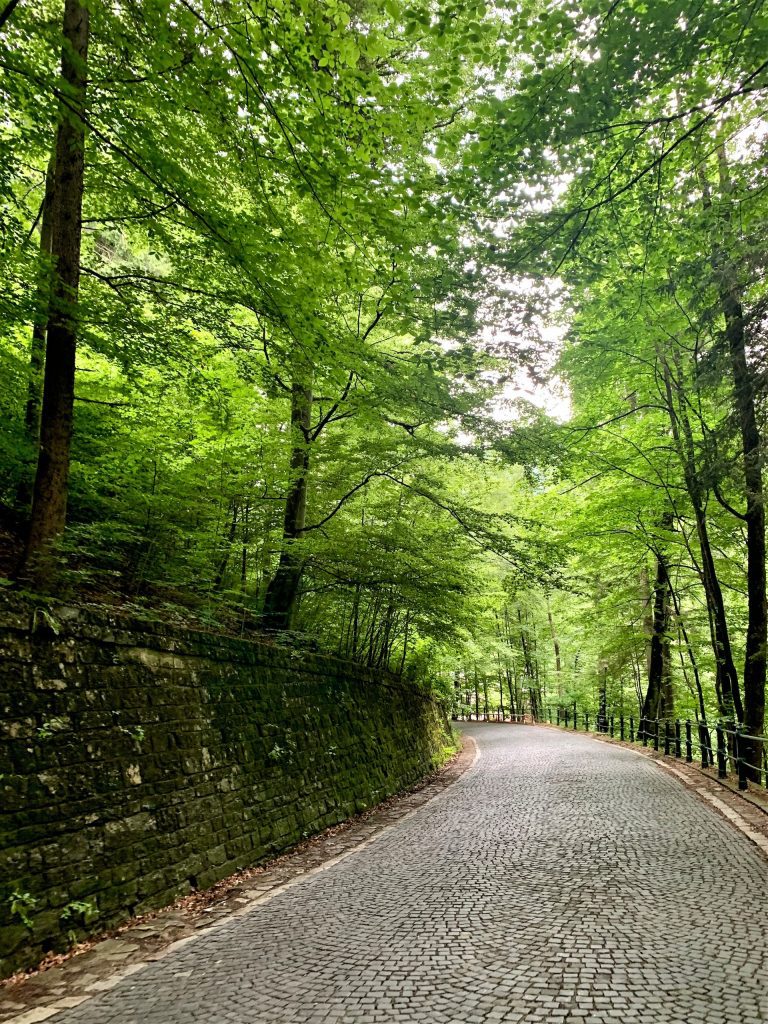
If you prefer to drive, the road from Bucharest to Sinaia takes approximately two hours. However, it’s important to note that the road can be busy on weekends, especially during peak tourist seasons. It is advisable to plan your trip accordingly, considering potential traffic conditions.
Once you arrive in Sinaia, finding parking may be a challenge, especially near popular attractions like Peleș Castle. However, there are designated parking areas near the town center and the castle, so you should be able to find a spot with a bit of patience.
If you are coming from Brasov, Sinaia is less than 50 km away. You can reach Sinaia from Brasov by either train or car, depending on your preference and convenience. Both options provide a relatively short and straightforward journey, allowing you to explore multiple destinations in the area.
Should you decide to take the train from Brasov, you can enjoy the picturesque views of the Carpathian Mountains and the surrounding landscapes along the way. If you prefer driving, the road between Brasov and Sinaia offers charming scenery and is well-maintained.
For those who choose to take the train, it’s important to note that the Sinaia train station is located in the town center. While walking from the train station to Peleș Castle is possible, it involves uphill climbing and may take around 30-45 minutes. Alternatively, you can arrange for transportation, such as a taxi or a local shuttle service, to take you directly to the castle.
Conclusion
Overall, a visit to the Peleș Castle in Sinaia, Romania, is a captivating journey into history and architectural splendor. This stunning neo-Renaissance castle stands as a testament to the rich cultural heritage of Romania. Built in the 19th century as a summer retreat for the Romanian royal family, Peleș Castle has become one of the most famous and beloved attractions in the country.
The castle’s design, influenced by classic European styles, is a masterpiece of architectural beauty. Each room is meticulously decorated, showcasing the grandeur and opulence of the era. One of the highlights is the Great Armory Room, which houses a remarkable collection of weaponry that reflects the castle’s royal significance.
Not only is Peleș Castle visually striking, but it also boasts technological innovation. It was the first fully powered castle in Europe, thanks to its use of electricity during its construction. This forward-thinking approach adds an extra layer of fascination to the castle’s historical importance.
Visitors to Peleș Castle can explore its many rooms and marvel at the intricate details and craftsmanship. The Royal Library, adorned with gold-decorated manuscripts, offers a glimpse into the intellectual pursuits of the royal family. The terraces and gardens surrounding the castle provide picturesque views of the majestic Carpathian Mountains, creating a serene and enchanting atmosphere.
As one of Romania’s most popular tourist attractions, Peleș Castle attracts hundreds of thousands of visitors each year. Its unique blend of history, architecture, and natural beauty make it a must-visit destination for anyone seeking a truly immersive cultural experience.
In conclusion, Peleș Castle stands as a proud symbol of Romania’s cultural heritage. It is a testament to the country’s rich history and architectural prowess. A visit to this enchanting castle is not only an opportunity to admire its grandeur but also to appreciate the remarkable significance it holds within Romanian culture. Peleș Castle is truly a treasure and a source of immense pride for Romania.
FAQ
Q: Is Peleș Castle open to the public?
A: Yes, Peleș Castle is open to the public and welcomes between 250,000 and 500,000 visitors annually.
Q: What is the architectural style of Peleș Castle?
A: Peleș Castle is designed in a Neorenaissance style, combining elements from German and Italian architecture.
Q: When was Peleș Castle constructed?
A: The construction of Peleș Castle began on August 22, 1873, and was completed in 1914.
Q: What other buildings are part of the Peleș Castle complex?
A: The Peleș Castle complex includes additional buildings such as a power plant, the Economat Building, the royal stables, the guards’ chambers, and the Foisor hunting lodge.
Q: Can visitors explore the interior of Peleș Castle?
A: Yes, visitors can explore the interior of Peleș Castle, which features 160 rooms decorated in exquisite detail.
Q: What are some notable exhibitions within Peleș Castle?
A: Some notable exhibitions within Peleș Castle include the Great Armory Room, which houses one of the finest collections of arms and armor in the world, the Royal Library with unique manuscripts adorned in gold, the Ceramics exhibition showcasing over 5,000 pieces of faience, porcelain, and floor tiles, and the Horology exhibition displaying over 50 clocks from the private royal collection.
Q: Can visitors enjoy the surrounding nature and views at Peleș Castle?
A: Yes, Peleș Castle is surrounded by a beautiful park and terraces with flowerbeds, fountains, and hidden passages. The surroundings offer stunning views of the Carpathian Mountains.
Q: Are there other attractions nearby Peleș Castle?
A: Yes, visitors can explore the nearby Pelisor Castle, which is the smaller sibling of Peleș Castle. Additionally, the town of Sinaia is known for its skiing opportunities, and Bran Castle, also known as Dracula’s Castle, is also within reach.
Q: How can visitors reach Sinaia?
A: Visitors can reach Sinaia by train from Bucharest, with a travel time of approximately 1.5 to 2.5 hours. Driving from Bucharest takes about two hours, and there are parking options available in town. From Brasov, Sinaia is less than 50 kilometers away, making it a convenient day trip destination.
Source Links
- https://en.wikipedia.org/wiki/Peleș_Castle
- https://www.tripadvisor.com/Attraction_Review-g315907-d318367-Reviews-Peles_Castle-Sinaia_Prahova_County_Southern_Romania.html
- https://fiveminutehistory.com/peles-and-pelisor-castles-of-the-romanian-royal-family/
- https://artsandculture.google.com/story/LgWRueL02nviKw
- https://mainlymuseums.com/post/668/peles-castle/
- https://www.historyhit.com/locations/peles-castle/
- https://www.tripadvisor.com/AttractionsNear-g315907-d318367-Peles_Castle-Sinaia_Prahova_County_Southern_Romania.html
- https://www.pelescastletickets.com/
